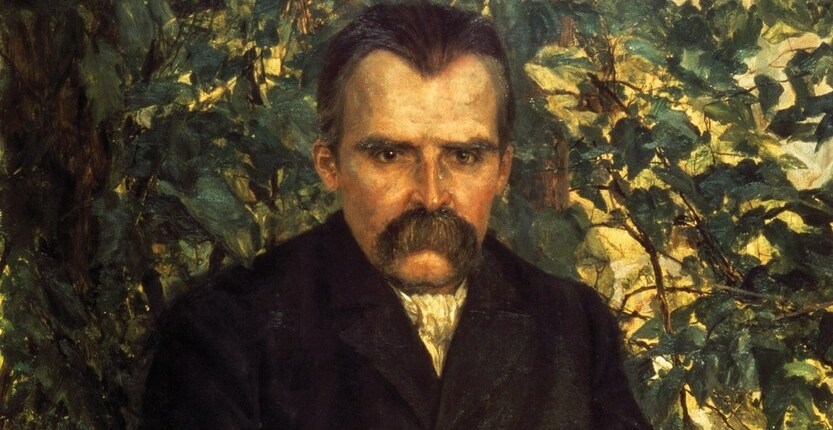Damiano Editions
David and Fidelity by Roberto Borghesi (Rome, Italy)
David and fidelity
David Boulanger’s painting research is twofold. On the one hand, it’s a confrontation with history, the history of painting. And then, we could give several names of artists that David quotes, from Leonardo to Van Gogh, and why not the baroque and Klee. On the other hand, the artist is looking for an “other” man, one could say Nietzsche’s “uebermensche”. Again, this research has its beginning in history. The image of the man is that which Nietzsche wrote, still in The Twilight of the Idols, about the “Demons” of Siberia of Dostojevskj. Indeed, the figures of David Boulanger’s men seem to be cut in the woods, they have the statue, but not fed up. We are not here on Michelangelo’s side. Outside, we are more on the side of a Vincent with a peasant’s body. David Boulanger’s man skips decisively the “body” of industrial figures; but this “body” is not projected towards an innocent return to the earth. David Boulanger’s portrait “exposes” a figure of a man whose gaze is never direct. The look, like the pose, is in profile. Only a portrait gives eyes, empty, which fixes the spectator : it is the “Head to Toto”. Except “Toto”, it’s the name of a puppet, it’s a “comic” name. But there is nothing comical in this portrait that recalls the calculation. Out, the man, who alone in the gallery looks at us, is a “head”, not even a portrait, not even a body. It is a digital head, a digital man, who in his serious fixity appears to us, according to the author, a “Toto”, not even a proper name, but almost a number name, as the notched numbers follow the arms of the victims at Auschwitz. We are still here! (see Heads field). But the painting of David proposes, precisely through his “demons”, his “Uebermensch”, a reference to the man of the “Renaissance”, the Renaissance. It is no coincidence that we meet, with a half discretion, the presence of Leonardo. But was not the “man” in his completeness Leonardo’s theme ? But also “alchemy” ? David Boulanger indeed seems, in his painting, a new alchemist; his potion is made of pieces of the history of painting, which he remodels in a new formula. However, we must be attentive to exceptions; for example, at the snake-belt, or at the Narcissus. These are quotes, of course, that let us think of another breath of David Boulanger’s research. And finally, in Le regard du portrait, Jean-Luc Nancy writes about the resemblance: “The resemblance has nothing to do with recognition” (Galileo, Paris, 2000, pg 40). Who does the man David Boulanger look like ? Does this portrait announce a “resemblance” to come ? Can we, contemporaries, recognize us in this portrait? Again Nancy : “Faithful likeness consists in showing something other than the correspondence of features” (page 43). Out, precisely, fidelity is one of the features of David Boulanger’s painting: from Leonardo to himself, it is fidelity to the “man”, that fidelity which, as Nietzsche would say, is “inactual”: Fidelity of a “man” looking for a “man”: And then, the discreet sense of the “classic” portrait of Narcissus. Once again, for us, David Boulanger is looking for himself, as always. And we follow him, his gaze marveling, for this is the marvel, the night-light of philosophy, as Aristotle already said.
Good luck to come to David.
Roberto Borghesi, May 2009.
Roberto Borghesi, Italian writer and Nietzsche specialist.
Text translated from Italian original:
Davide and the fedeltà
La ricerca in pittura di Davide Boulanger è doppia. Da una parte, è un confronto con la storia, la storia della pittura. Ed allora, si potrebbe fatta parecchi nomi di artisti che Davide cita, da Leonardo a Vaglio Goog, e perché non il barocco e Klee. Altra parte, l’artista è alla ricercata di un “altro” uomo, si potrebbe dire il “uebermensche” di Nietzsche? Ancore una volta, questa ricerca ha il suo inizio nella storia. Il himmage dell’uomo è quella di di cui scrive Nietzsche, ancore nel Crepuscolo degli Idoli, a proposito dei “Demoni” di Siberia di Dostojevskj. Le figure di uomo di Davide Boulanger, difatti, sembrano essere tagliate nel bosco, hanno della statua, ma non di mi diverto. Non siamo qui, dello quotato di Michelangelo. Fuori, siamo, piuttosto dello quotato di un Vincent al corpo di contadino. L’uomo di Davide Boulager salta con déciasion il “corpo” delle figure industriali; ma questo “corpo” non è progettato verso un retoour innocente alla terra. Il ritratto da Davide Boulager, “esponi”, una figura di uomo don’t lo sguardo non è mai diretto. Lo sguardo, siccome la posa, è di profilo. Solo un ritratto dà degli occhi, vuoti che fissano lo specateur,: è la “testa di Toto.” Fuori “toto” è il nome di un marionette, è un nome “comico.” Ma non c’è niente di comico in questo ritratto che ricorda il calcolo. Fuori, l’uomo che solo, nel gallerie noi sguardo è una” testa”, stesso non un ritratto, stesso non un corpo. È una testa numerica, un uomo numerico che danas il suo fixxité serio annodò appaiasse, secondo l’autore, un “toto”, stesso non un nome “proprio, ma quasi un nome numero, come i numeri incisi suir le braccia delle vittime ad Auschwitz. Noi tutto sommato ancore là!(voir”Champ di teste”) Ma la pittura di Davide propone, precisamente attraverso i suoi “dèmons”, i suoi “Uebermensch”, un rinvio all’uomo della “rinascita”, del Rinascimento. Non è un caso se si incontra, con una mezzo discrezione, la presenza di Leonardo. Ma il “uomo”, nel suo complétude non era il tema di L’eonardo? Ma anche la “alchimia?” Davide Boulanger, sembra difatti, nella sua pittura una nuova alchimista; il suo possion è fatto dei pezzi della storia della pittura, che egli remodelle in una nuova formula. Bisogna essere attento, tutto di nonna agli individui; per esempio al cincture-serpente, dove al Narciso. Sono delle citazioni, bene su che ci lascio pensare ad un altro suffle della ricerca di Davide Boulanger. E, infine: in suono Lo sguardo del ritratto, Jean-Luc Nancy scrive di somiglianza. Scrive: “Il resemblance non ha niente da vedere col reconnaissance”(Galilée, Parigi, 2000, pg,40). Chi, a chi, questo-somiglia l’uomo di cui Davide Boulanger fa il ritratto? Questo portava annuncio una “somiglianza” a venire? Possiamo, contemporéens, riconoscerci in questo ritratto? Ancora Nancy: “Il resemblance fedele consiste bene in mostrare altro che il correspondence dei tratti” (pg43). Fuori, précisémet, la fedeltà è una dei tratti della pittura di Davide Boulanger: da Leonardo a lui nonna, è il fidèlité al “uomo”, questo fidèlité che, come direbbe Nietzsche, è “inattuale”: Fidèlité di un “uomo” in cerche di un “uomo: Ed allora, il senso discreto del protrait “classico” di Narciso. Ancore una volta, puro noi, Davide Boulanger è alla ricerca di si nonna, come sempre. E noi lo seguiamo, lo sguardo èmerveillé, perché sono buono la meraviglia, il veilleuse della filosofia, come diceva già Aristotele.
Bonna fortuna ed a venire a Davide.
Roberto Borghesi, maggio 2009.





